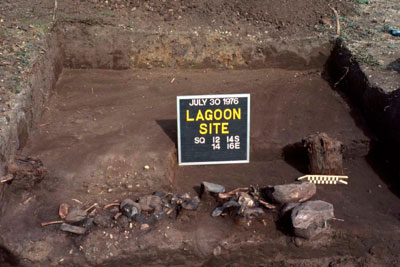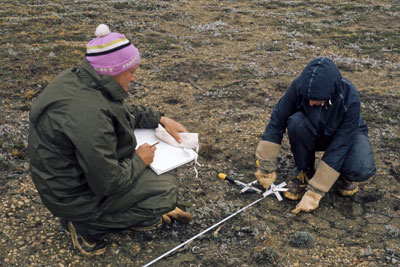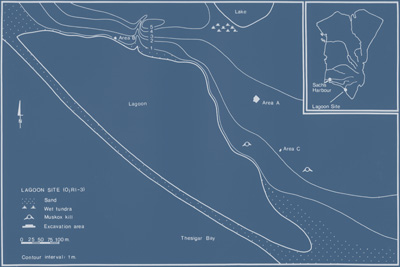People and Place
The earliest inhabitants of the Canadian Arctic appeared about four thousand years ago. They are called the Pre-Dorset people by archaeologists. The Lagoon site on Banks Island is one of the ancient camps where these nomadic people lived. From early spring to late summer, this saltwater lagoon provided a rich environment with abundant supplies.
With the end of the cold and dark winter, days would become longer and the weather would warm up. Seals basking on the ice were easy prey. Newly-arrived waterfowl were a welcome change to people’s diet, including snow geese and whistling swans. Seals, muskox, arctic fox, arctic hare, caribou, ptarmigan, snowy owls and sandhill cranes were also present. With more food to share, there would be lots of visiting and other socializing.
Many sewing and animal skin preparation tools were found here, which shows us that these activities were important. The creation of warm, resilient, water-resistant clothing was one of the factors that ensured survival, and required much knowledge and craftsmanship.
"Because the Lagoon site was so unlike anything else that was known at the time, excavating at the site and studying the archaeological remains was an ongoing process of discovery. Even now, many years after working at the site, I still wonder about the people who lived there over 2,000 years ago, and feel a sense of connection to them through their artifacts."



